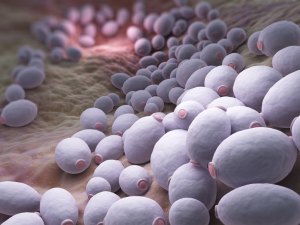
What is Candida and what causes it?
Candida is a genus of yeasts and is also one of the most common causes of fungal infection. A very tiny amount of the fungus lives in the mouth and the intestine, to aid with digestion.
What Causes Candida?
Overproduction of Candida results in the break down of the intestine wall. This results in penetrating the bloodstream and thereby the release of toxic byproducts into the body. In addition, it also leads to a leaky gut.
Candida is a yeast-like parasitic fungus that can occasionally cause thrush. The fungus can live on all surfaces of the body. However, under certain conditions, it’s possible that it can cause infections especially in moist and warm areas. This can result in infections such as oral thrush, vaginal thrush, skin and nappy rash (in babies), along with bed infections.
Other common areas for the infection to occur include the underarms. While the skin can usually block yeast, any breakdown or cuts in the skin can allow this organism to penetrate. This is how the bacterial infection can spread. It is rare for the yeast infection to spread throughout the body. However if it did, systemic candidal disease could be fatal.
In people with compromised immune systems, due to candidal infections or diseases like AIDS, this can become life threatening. In women, yeast infections can be common and cause itching, discharge and vaginal burning.
Taking antibiotics may not prevent Candida. Antibiotics and steroids are believed to be two of the most common reasons for yeast overgrowth. It’s also believed that diabetes, menstruation, pregnancy, sperm and diet pills can all play a part in causing a yeast infection to develop. Avoiding it is simple when a naturally healthy diet is followed along with the appropriate nutrients to stimulate the body’s natural self healing processes.



